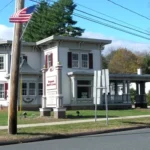Why We Have Amtrak.
For close to a century, passenger trains were the way people in this country traveled. But then, almost overnight, it all changed. Flying had become more affordable and more accepted. And the brand new Interstate Highway System had turned the automobile into the family’s magic carpet. Passenger trains became old fashioned and out of favor.
Because of this transportation revolution, by the 1950s, the private railroads were losing huge amounts of money and wanted desperately to get out of the passenger business. But because each railroad had been granted monopolies on specific routes, they were all tightly regulated by the federal government. Official approval was needed before they could raise ticket prices, let alone shut down their passenger business. Eventually, when it was agreed that a single government-owned passenger railroad was the answer, the private railroads shut down their passenger business and helped with the creation of Amtrak by contributing money and/or equipment.
Once up and running, of course it would be necessary for Amtrak’s long-distance trains to use track owned by the private railroads. The deal, agreed to by all the parties, said that Amtrak would pay reasonable fees for access to track owned by the freight railroads. In return—and this is the heart of the current problems—the freight railroads agreed that they would give Amtrak passenger trains preference over their own freight trains.
There was a great deal more to it, of course, but the legislation was passed by Congress and signed by President Nixon. Amtrak was born and the agreement, including the part about the freight railroads giving preference to Amtrak trains, became the law.
NEXT POST: That was then . . . this is now.


